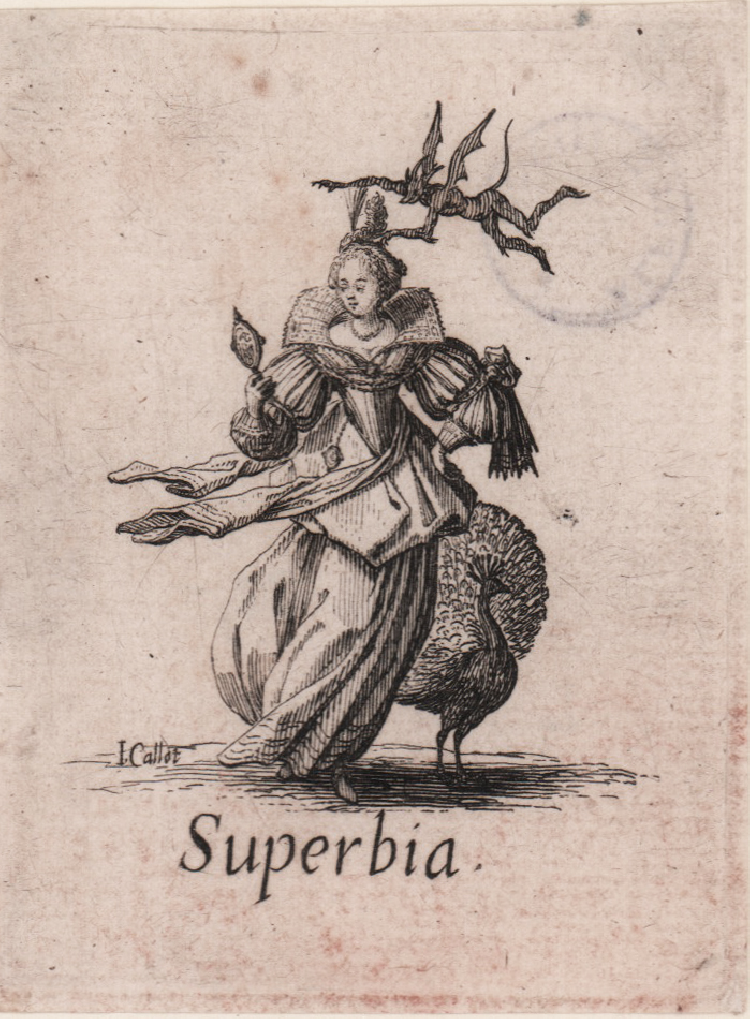



| Reference: | S36074 |
| Author | Jacques CALLOT |
| Year: | 1620 ca. |
| Measures: | 60 x 80 mm |


| Reference: | S36074 |
| Author | Jacques CALLOT |
| Year: | 1620 ca. |
| Measures: | 60 x 80 mm |
Pride: female figure, elegantly dressed, walking to right and looking into a mirror; demon hovering over her; peacock at her feet, on the right; on white ground.
Etching, with some engraving, c.1618/25, signed at lower left.
From a series of seven plates representing the deadly sins, Les Péchées Capitaux. According to Felibien, the plates were engraved after Poccetti, but this remain to be confirmed.
The series may have been executed after Callot's return in Nancy, or while he was still in Florence (Meaume, for one, dates it from 1620); some of the figures are indeed reminiscent of the demons in the temptation of St Anthony he engraved during his stay in the Italian city.
A fine impression of the first state before the number, printed on contemporary laid paper, trimmed to the platemark, very good condition.
Bibliografia
Lieure 1927 / Jacques Callot (354.I); Meaume 1860 / Recherches sur la vie et les ouvrages de Jacques Callot (157.I); 'Jacques Callot' (Nancy, 1992), No.678-684.
Jacques CALLOT (Nancy 1592 - 1635)
|
He was a baroque graphics artist, draftsman and printmaker from the Duchy of Lorraine (an independant state on the North-Eastern border with France). He made etchings that chronicled the people and the life of his period (soldiers, clowns, drunkards, wanderers, beggars, and various outcasts). These images of people are often contrasted by spectacular landscapes (see, for instance, "The Temptation of St. Anthony"). His skill in shading and his use of different tones were remarkable for the period and he is often compared to Albrecht Dürer.
|
Jacques CALLOT (Nancy 1592 - 1635)
|
He was a baroque graphics artist, draftsman and printmaker from the Duchy of Lorraine (an independant state on the North-Eastern border with France). He made etchings that chronicled the people and the life of his period (soldiers, clowns, drunkards, wanderers, beggars, and various outcasts). These images of people are often contrasted by spectacular landscapes (see, for instance, "The Temptation of St. Anthony"). His skill in shading and his use of different tones were remarkable for the period and he is often compared to Albrecht Dürer.
|